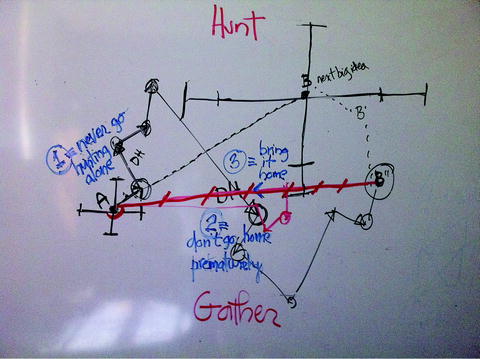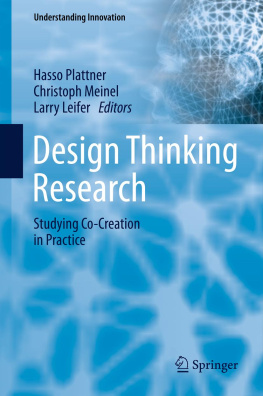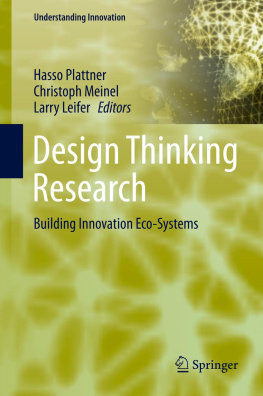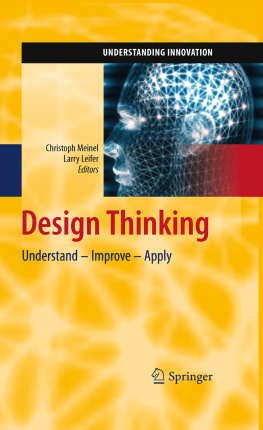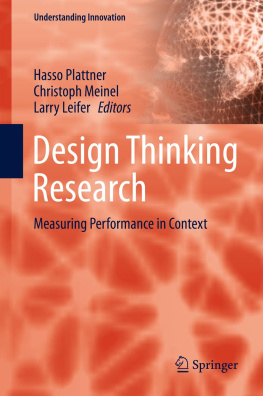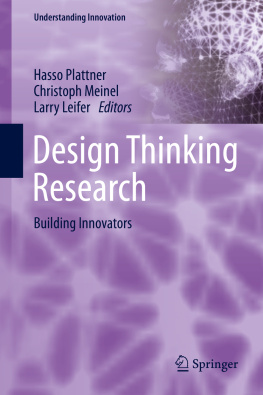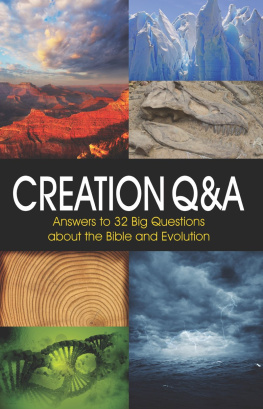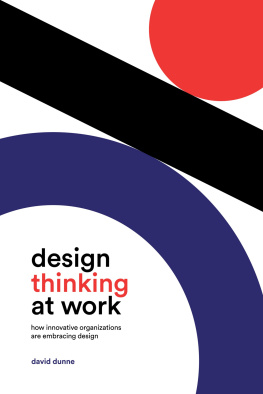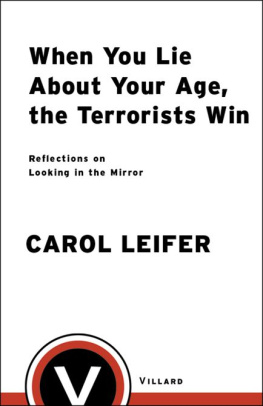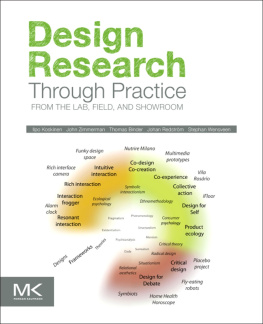Hasso Plattner , Christoph Meinel and Larry Leifer (eds.) Understanding Innovation Design Thinking Research 2012 Studying Co-Creation in Practice 10.1007/978-3-642-21643-5_1 Springer-Verlag Berlin Heidelberg 2012
Design Thinking as Innovation Foray
Innovators love creating an idea and are constantly trying to invent new things or to improve already existing products and services. When people are creating ideas, they get excited about it, they take ownership, and they make commitments. They do everything possible to make sure the concept can become a reality that others appreciate. When the creation process is performed by a team the effort is magnified and the energy multiplied. For this reason, we consider co-creation as a crucial aspect in the complex socio-technical field of design thinking in action.
This years book summarizes the results of the 2nd year in the Design Thinking Research Program, a joint venture of Stanford University in Palo Alto and Hasso Plattner Institute in Potsdam. We have taken a closer look at the issue of co-creation from different points-of-view. The concept behind co-creation may sound simple, however, it is both an essential element of Design Thinking and highly complex. It is about creating positive synergies for all parties involved.
The concept of co-creation can also be applied to the phase in which new ideas, and those related to them, start to influence companies, the economy, our culture, and society. The perpetual pursuit for inventions, new creations and innovations is inherent to human nature. Looking back on the history of mankind it becomes obvious that people have always been looking for a better way, and a better life. Innovation is not new, but the pace has changed. Quicker and faster becomes the mantra. While innovation may once have been coincidental, a by-product of some other intention, it is today the ultimate goal of our research and development institutions.
An innovation can also evolve from putting together already existing pieces in a new way. The same goes for the process of co-creation. Many different influences, ideas and goals must be synthesized by the team that is co-creating with the intention to find something new, something ground breaking, and an innovation that sells.
The Innovation Foray: Hunter-Gatherer model has emerged from our ways of thinking, discussing, and testing to increase the probability of successful innovation from research, development, and marketing activities. The model has proven useful as a means to communicate the core ideas in design thinking, meaning, the key ingredients, to others. It emphasizes that there are different roles to be played in the activities of innovating, and gives flavor to what these roles must be: (1) the Hunter and: (2) the Gatherer. There is a time to hunt and a time to gather. There are times to seek the next big thing and times to deliver the next big thing. The Innovation Foray is all about finding and delivering ideas that sell. The enterprise must understand this distinction and do both well.
Figure is the first published embodiment of the Hunter-Gatherer metaphor for innovation and delivery. We have made a personal commitment not to render the concept in power point slides. This is because any seemingly final and definitive figure would destroy the meaning of the metaphor that every hunt has a unique path. The model is all about actions, activities, and movements, what we do in the moment, what we learn on the fly, and how we discover the unknown in unfamiliar terrain. There is no roadmap. Dont even ask for one. It would be wrong minded to do so. We do not want to even imply a fixed model of how to come up with innovations, but we do hope to offer a model that will help to everyone grasp the seemingly diffuse endeavor of seeking (=hunting for) an innovation a metaphor that inspires sensible action.
Fig. 1
This white-board sketch represents a design thinking conversation that was seeking to define the research question and methodology for a pending research proposal
This model also describes the dynamics of design thinking. These activities have time constants on the order of milliseconds. The Hunter-Gatherer Model is about enfolding events, awareness, observation, and real time intervention. It is the whole mind-body alertness of the hunting team and the optimized mind set of the gathering team.
We are hunting for an idea that sells, and it had better be big. We want to solve a problem, perhaps remove the problem itself through design thinking, new products, and/or remarkable services.
It documents the necessarily ad-hoc (discovery journey) Innovation Foray: hunter-gatherer model for the activities and thinking processes design researchers employ to do design-research. They are looking for the next big idea using Designerly Ways of Thinking (Nigel Cross, 2005). You will find an expanded discussion of the process representation in the following text.
We find that the designerly ways of approaching design research are decidedly different than the approach derived from the physical sciences. It is highly adaptive and evidence based versus theory centric. When hunting for the next big idea it is absolutely essential that we observe and act upon all of the signals at hand. The associated activities (behaviors) differ from those used to validate theories and frame works. In Fig. we have captured one example of a search scenario related to finding a better way to communicate new ideas within small teams that are widely distributed in space and time. We imagine starting on the lower left at point A. Vertical and horizontal bars roughly represent the magnitude of our uncertainty about the present. We have an initial understanding of what the need/problem we are seeking to satisfy or solve. The uncertainty error bars are rather concise at point A. Towards the upper right, surrounding point B, we imagine the concept zone we are targeting. Here, there are many concepts that might allow us to solve the problem. Until we get there, it is unclear which ideas we may find, how valuable they will turn out to be, how many alternative understandings there could be and how to find them. Thus, the uncertainty bars surrounding point B are nothing but huge.
We are about to go hunting and we invoke the Human Rule , never go hunting alone .
Go hunting in teams, choosing one that is small and agile with a maximum of diversity. Include at least one really good hunter for sure, but don't forget to also include good gathering talent too. We need their insights as to whether or not the big idea can actually be delivered. We recommend including a realist, someone who pays attention to time, money, and the weather. And it is wise to include people persons who pay attention to team dynamics, feelings and communication. At the outset, we have no idea when or where we will find that big idea and therefore the expeditionary team needs to be carefully chosen, trained, and well provisioned.
